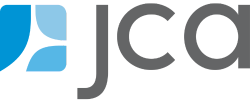Moving On—How to Leave Your Legacy CRM

You’ve been running your advancement services shop on a legacy version of The Raiser’s Edge, Millennium, Banner Advancement, or that loosely strung-together Access database one of your board members built for you in 1997. As your organization has grown and evolved over the years (or decades), you’re settling into the overwhelming understanding that it’s time to move on and consider a new system.
“No problem,” you tell yourself. “I’ll just Google some other software products out there, call a few vendors, get quotes, and buy it. Surely, they’ll have someone who can plug it in and get us started.”
Nothing, as you actually know, could be further from reality. The above scenario is a recipe for disaster. So, if not that, then what?
In real estate, it’s all about “location, location, location.” In technology, it’s all about “preparation, preparation, preparation.” Before you even consider going out into the great wide unknown, take a few steps back and really think about what your organization needs.
A System Selection is comprised of two distinct components: a needs assessment and the selection process itself. In other words, first you need to figure out WHAT you need and WHY you need it. Only once you’ve completed your preparation should you move into the process of selecting the right system to meet your organization’s needs.
So What Happens in a Needs Assessment?
What are your objectives? It’s important to understand what your organization seeks to gain with a new system, how those needs have been met in the past, and the stakeholders within the process.
Who is doing what? Each person involved in the analysis must have a clearly defined role and a set of responsibilities. This holds each person accountable for something and avoids unnecessary duplication of efforts.
Who is affected? Identify and define the departments involved in the CRM replacement decision process. Who has a stake in the current CRM? Who uses the CRM daily? Who uses it occasionally? Who never uses it, but relies on the reports which it generates?
Whom should we talk to? A critical element of a needs assessment is a thoughtful and deliberate interview process. You’ve already determined which departments are affected by the CRM. Now, you need to identify who from each of those departments should speak on behalf of the organization. Think leadership as well as staff doing the day-to-day work.
What troubles you? A CRM replacement is needed because you can no longer bear the pain caused by inadequate systems or dysfunctional processes. Be sure you express the challenges you are facing, who is having problems, the nature of the issues and the pain it’s all causing.
What is working well? It can be easy to focus on challenges and overlook key functionality you have today that you don’t want to lose. Which functions are tied to important strengths of your programs, and what things might make sense to change?
Okay, We’ve Done the Prep Work… Now What?
You’ve asked all the right questions in your needs assessment and now it’s time to embark on the system selection process. But what, exactly, goes into that process? Here are the key steps to selecting your system:
- Develop & Prioritize Your Requirements: Based on what you uncovered in your needs assessment, determine your business needs for each functional area in your fundraising shop. Prioritize your requirements, from ‘what’s a must’ to do business down to your ‘wish list.’ Pay special consideration to any requirements that are not typical to off-the-shelf software, as those may be the differentiator between systems.
- Survey the Market: Talk to your peers about what CRM they use for their fundraising. Look up reviews of specific systems. Look at what competitor organizations are using. Do some research to come up with a short-list of systems you want to consider.
- Write & Send your RFP: Use your established requirements to include in your Request for Proposal (RFP) and send to your identified short-list of vendors.
- Create Your Demonstration Scripts: Often, vendors want to show you all the ‘shiny’ parts of their system. Don’t get distracted! Create a script that combines scenarios that address your organization’s distinct requirements, as well as industry best practices. The scripts will drive the demos and provide a clear-cut view of how each vendor handles the same scenarios.
- Hold Demos & Make Your Selection: Schedule your demonstrations with your short-list of vendors. Be sure to allow yourself plenty of time for them to address all the scenarios in your script AND leave time for questions. Based on how the demos address your prioritized requirements, give each system a rating, discuss the ratings with your team, and confidently make your selection.
So there you have it! A deliberate and thoughtful planning process will set you up for a successful creation of an RFP, allow you to properly weight and score vendor responses, and ultimately make the best, most informed decision to move on to a replacement CRM.
Looking for more tips?
Check out our recent webinar, System Selection: Make the Right Move for Your Organization. The recording and PowerPoint slides from the presentation are available for download.
Need a New System?
JCA can help make sense of your options. Your system is the foundation of your work, and switching to something new shouldn’t be treated lightly. Let us help you find the right solution for your nonprofit.
